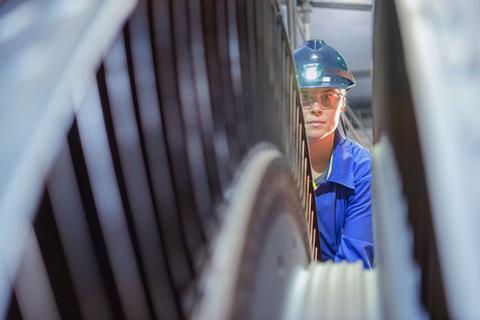Use these 7 strategies to bring science learning to life by linking new topics to exciting career pathways

I want my students to engage with the science they’re learning. I’ve found introducing the idea of inspirational career paths through a variety of teaching methods is a great way to begin a new – potentially daunting – area like nuclear chemistry, for example. Use my tips to inspire your students, whatever the topic.
1. Link to news
Starting to teach nuclear chemistry? Connect it to real-world context by finding a thought-provoking news article and using it as a starting point for your lesson.
Articles on radioactive waste, new nuclear power plants or nuclear fusion success will introduce the idea that nuclear chemistry is both relevant to students’ lives, and a controversial topic. Explain which career paths students could choose to work in these fields and invite them to formulate arguments for or against based on the latest scientific research. This method can help demystify the subject and boost confidence while demonstrating how vital a career in nuclear chemistry is to a country’s economy.
2. Make it relatable
Before plunging into the facts around radioactivity, ask yourself what students will come across in their daily lives that you could link to the topic. News sources work well here too, but you could also provoke interest by explaining that certain foods are a natural source of radioactivity and ask students to research these – examples are bananas and Brazil nuts. Then you could move onto household items that may be a surprising source of radiation, like smoke detectors, which can be linked to isotopes, then to radiation.
3. Invite an expert
Meeting a real-life scientist with a passion for their subject will achieve a much higher level of student engagement than reading a textbook ever could. Do any of your students have a family member who works in a field they’re studying? Can you invite them to join a class to explain their role and the educational path they took to get there, before answering student questions? Or why not reach out to a local company? They may be willing to send someone to speak to your class for their community engagement.
4. Create simple slides
Create one-page PowerPoint slides to introduce jobs related to chemistry topics that might inspire your students. Include a brief description, salary range and working hours. Use an image of a person doing the job who your students can relate to. The National Careers website has plenty of examples that you could use, including chemical engineer, nuclear engineer, nuclear technician and medical physicist. You’ll also find more than 100 job profiles on A Future in Chemistry.
Download and print
Posters to display in your classroom of real-life chemists to spark your students’ interest and demonstrate how they can make a difference to the world with science.
If a non-chemist visits, talk to the rest of your science team or department to share resources around career choices.
5. Build inclusivity
Find researchers in the field whose lives and experiences will show your students that a career in science is possible whatever your gender or background. Dispel assumptions that chemistry is a career dominated by men by sharing the stories of Biba Chowdhuri, the first Indian woman to gain a PhD in physics, and chartered chemist Ellie Laney-Bolton, who was at the forefront of keeping nuclear power stations in the UK safe and operational during the Covid-19 pandemic. You could also include the biography of Jabir ibn Hayyan, one of the founders of modern pharmacy, or highlight a less well-known role such as a radioactive waste consultant.
6. Point to career pathways
It can be hard for students to imagine themselves in a jobs like being a nuclear physicist, for example, so give them a practical guide to achieving it in ways that may not involve a traditional university degree. You could mention workplace apprenticeships and T-levels. On one T-level course in the nuclear sector, students spend 80% of their time in the workplace and 20% on classroom learning.
Explain the university route, highlighting entry requirements, but also let students know about degree apprenticeships.
7. Enrich learning
As we know, achievement isn’t all about academic textbooks. Hands-on learning is a great way to stimulate enthusiasm for careers in science. So if your topic is nuclear chemistry, you could send for a University of York LEGO nuclide chart loan kit. Use it to make learning even more enriching.
Outreach, such as science clubs, masterclasses and trips to places of interest will also help provide your students with the fully-rounded education they need when beginning their journey towards a scientific career.
More inspiration
For more careers information and inspiration to share with your students, visit:
Mustafa Mahmoud is an RSC scholar and teaches chemistry and physics













No comments yet